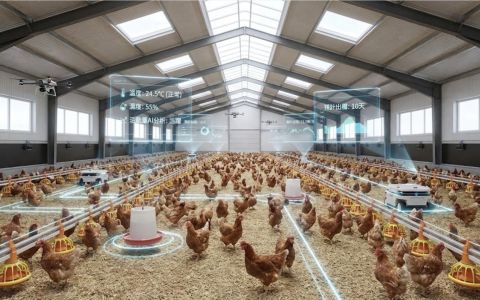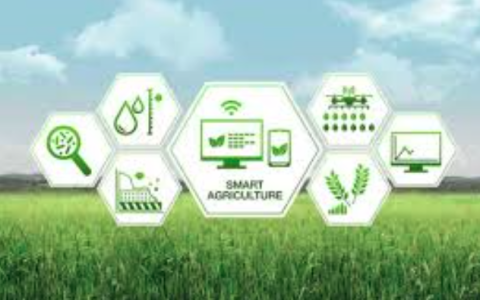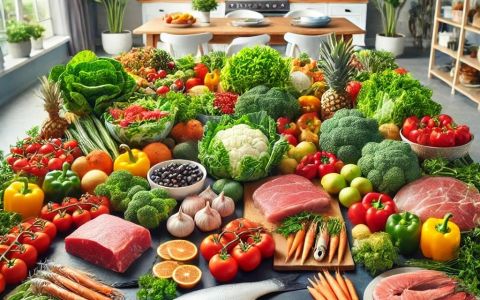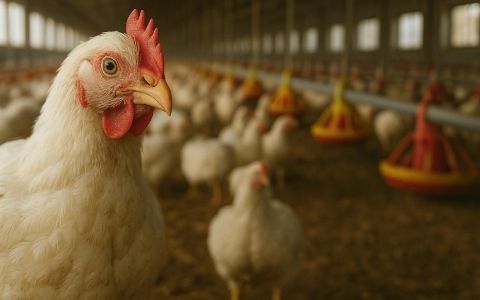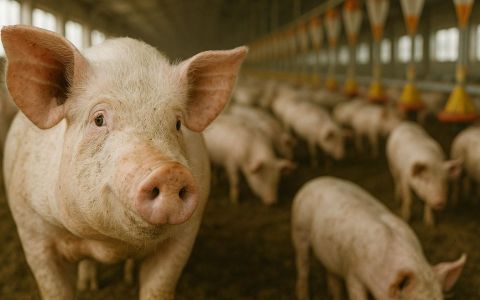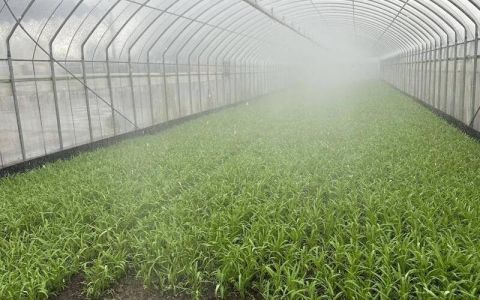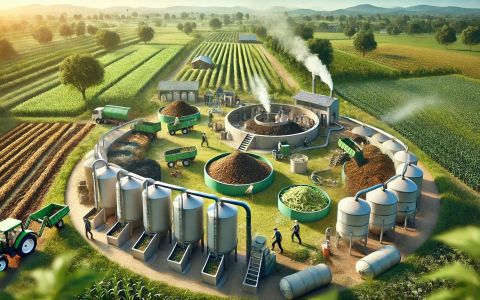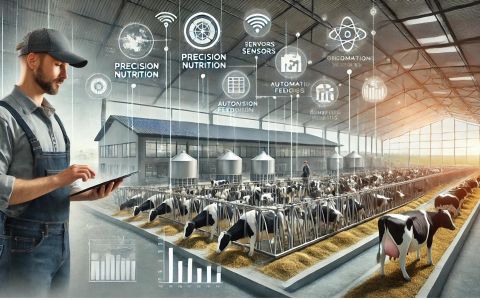Land-based aquaculture is shifting to offshore cage nets, with ocean ranching becoming a trend
The taste of saltwater fish is more delicious compared to freshwater fish, making it the preferred choice for consumption by most people. This has led to a global problem of depletion of marine fish stocks, prompting aquaculture production to surpass wild fishing. However, terrestrial environments are susceptible to natural disasters and human-induced destruction, coupled with the scarcity of arable land and freshwater. As a result, the shift of land-based aquaculture to offshore cage net farming, creating "ocean ranching," has become a trend. This allows for the consumption of saltwater fish without the need for ocean fishing, while land can be repurposed for other uses. It saves freshwater resources, reduces carbon footprints and damage caused by disasters, and promotes a friendly farming environment that minimizes the impact of aquaculture on the environment, ultimately achieving sustainable operation.
Cage net farming is moving towards technological development
Taiwan's main locations for cage net farming are Penghu and Pingtung, where high-value fish species such as grouper and barramundi are primarily cultivated. Currently, the Fisheries Agency is subsidizing the Ocean University to develop "intelligent cage net farming technology" to enhance feeding efficiency, save labor and time costs. They have also developed a "cage net equipment warning system" that can instantly issue alerts for net washing and net damage to minimize losses. By integrating monitoring devices with various platforms, they can track and improve production efficiency anytime, anywhere, thus enhancing the economic value of the aquaculture industry. Currently, the domestic offshore cage net farming production is only 3,000 metric tons. The Fisheries Agency has plans to gradually shift land-based farming to offshore development, with the goal of increasing production fivefold to 15,000 metric tons in the next 10 years. Offshore cage net farming will become the mainstay of the aquaculture industry and is a key industry supported by the Fisheries Agency.
Taiwanese manufacturers of technologically advanced cage net farming systems
YUANG HSIAN METAL INDUSTRIAL CORP.
They primarily produce copper alloy wire products, specializing in the production of "AB65 Copper Alloy Anti-Biofouling Cage Net" wire. This wire effectively inhibits parasites and pathogens, preventing the attachment of organisms such as sea squirts, seaweed, and shellfish. It possesses high tensile strength, abrasion resistance, and corrosion resistance against seawater, enabling it to withstand strong ocean currents and maintain the shape of the cage nets, even in the Kuroshio current region. Sufficient space is provided to prevent overcrowding of fish and maintain oxygen levels, ultimately increasing the output of fish farming.
KING CHOU MARINE TECHNOLOGY CO., LTD.
As one of the top three net manufacturing companies globally, they produce various types of fishing nets for offshore fisheries. They utilize special black raw materials produced by renowned chemical fiber manufacturers to create nets with enhanced abrasion resistance and high tensile strength. Jinchou places great importance on the development and manufacturing of cage nets. The netting panels are woven using UV-resistant and high-tensile raw materials, ensuring they can withstand harsh deep-sea conditions at depths of over 20 meters and resist predation from marine animals. Their cage nets also meet the NS-9415 certification standards for cage net farming set by the Norwegian certification company NOOMAS Sertifisering, making them a trusted choice for fish farmers.
Digital Content and Multimedia Technology Research Center, National Sun Yat-sen University
They are dedicated to developing the "AI Smart Farming System for White Shrimp" equipped with underwater image recognition and intelligent feeding technologies. This system enables direct observation of white shrimp's real-time biological information, such as food intake and growth, underwater, thus avoiding misjudgment or delayed response to potential risks that could result in significant losses. By utilizing AI technology, this intelligent system helps aquaculture industries save labor, reduce risks, and enhance productivity and profitability. It brings Taiwan's aquaculture industry into a new era of intelligence. In recognition of their achievements, they have received the 2021 Future Technology Award and the 19th National Innovation Award in 2022.
MIC METER INDUSTRIAL COMPANY
A professional instrument manufacturer from Taiwan, they offer hardware products such as "underwater cameras" and "lens housings." Their patented design for the housing includes a built-in filter screen, LED lighting for illumination, and features that make it resistant to both seawater and corrosion. Their software products include "AI image enhancement and intelligent analysis." These software solutions provide real-time transmission of images and analyze the healthy growth status and trends of shrimp. If the growth trend deviates, an alarm is triggered, and the software also analyzes the size of the shrimp as a basis for harvesting.
Fishtek Marine
Sharks and dolphins often damage fishing nets while preying on fish, resulting in reduced catch and significant economic losses. The product "Anti-Predatory Acoustic Deterrent" generates louder and randomly unpredictable sounds compared to standard deterrent devices. When sharks and dolphins approach the net, they are startled by these sounds, effectively driving them away.
SKYNAV TECHNOLOGY, INC.
Specializing in the sales and development of satellite communication and navigation equipment, their product lineup includes the "Diver Tracking Device." This device features a compact and durable rugged casing and utilizes AIS (Automatic Identification System) communication technology. It offers high versatility and can automatically transmit signals for fast and accurate positioning. Additionally, they offer the "AIS Personal Man Overboard (MOB) Beacon" designed with shock-resistant industrial-grade plastic casing. It has a continuous operating time of up to 7 days and can withstand water depths of up to 100 meters, with a transmission range of 4 nautical miles (NM). Both of these products serve as essential safety equipment for aquaculture personnel.
JNC TECHNOLOGY CO., LTD.
Dedicated to the research, development, and manufacturing of IoT (Internet of Things) AI sensors and controllers, they strive to create modularized systems for comprehensive management. These systems break through spatial and temporal barriers, allowing users to monitor aquaculture conditions anytime and anywhere. One of their products is the "Cloud-based Underwater Camera" that enables monitoring of the conditions within the cages. It can perform tasks such as water quality monitoring, analysis of feed, and automatic feeding. The cloud-based system also allows for management and monitoring of multiple cage nets.
EstiNet Technologies Inc.
They develop AIoT (Artificial Intelligence of Things) smart IoT systems that utilize IoT water quality monitoring and IP camera technologies. With support for mobile software display, the IoT system can instantly connect to Line, sending real-time screenshots of any anomalies on-site to the administrator's mobile phone. It also allows for on-site settings adjustments through mobile devices. They collaborate with national-level corporate research institutions such as the Agricultural Technology Research Institute, Fisheries Research Institute, Stone and Resource Industry R&D Center, Industrial Technology Research Institute, and Institute for Information Industry to facilitate technology transfer and research and development cooperation, thus achieving smart aquaculture goals.
Other News
This report is based on the 2024 Taiwan Poultry Statistical Manual, published by the Veterinary and Livestock Development Foundation. The following is a quick summary highlighting the key data and development trends of Taiwan's poultry industry in 2024:
Climate change, labour shortages and rising sustainability demands are reshaping agriculture. Here are the key smart farming technologies and trends transforming the sector in 2026.
Taiwan's ready-to-eat agricultural and fishery products and functional foods market is undergoing rapid transformation and growth, primarily driven by modern consumers' high demand for convenience, health, and sustainability. In terms of supply chain, government and private enterprises are heavily investing in automated processing technologies and nationwide cold chain logistics systems to address labor shortages, enhance food safety and quality, and strengthen export competitiveness.
Aquaculture has become a cornerstone of Taiwan's fisheries sector. As of 2023, the industry's production value reached approximately NT$40.2 billion, accounting for nearly 41% of the country's total fisheries output.
Taiwan's poultry industry represents a substantial market opportunity for international equipment manufacturers and technology providers.
Taiwan's livestock production value reaches approximately NT$185.8 billion annually (2021 data), accounting for about 34.6% of the total agricultural output value
Smart irrigation and scheduling tech improve greenhouse farming efficiency in Taiwan, reducing labor needs and increasing productivity.
Taiwan’s agriculture plays a pivotal role in national food security, economic development, and global trade. Despite limited arable land, climate challenges, and an aging rural workforce, Taiwan has developed a highly efficient and technologically advanced agricultural system. Today, the sector is undergoing a digital and sustainable transformation through smart farming, automation, and eco-friendly practices—aimed at boosting productivity, reducing labor reliance, and improving resilience.
Discover how cutting-edge carbon reduction strategies and circular technologies are transforming agriculture, with inspiring examples from Taiwan and Japan leading the way to a greener, more sustainable future.
Integrating smart technologies such as sensors, IoT, and AI into agriculture and livestock sectors enables precise nutritional management, enhancing production efficiency, reducing waste, and promoting environmental sustainability.









